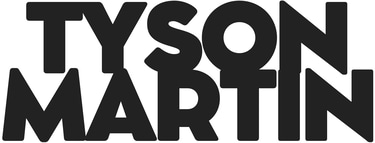Privacy as a Product Feature: Embedding Data Ethics into Digital Roadmaps
In an era when every brand is becoming a digital brand, privacy has become more than a legal obligation. It’s now a defining element of product experience, brand identity, and customer trust.


Privacy as a Product Feature: Embedding Data Ethics into Digital Roadmaps
In an era when every brand is becoming a digital brand, privacy has become more than a legal obligation. It’s now a defining element of product experience, brand identity, and customer trust. And for organizations serious about long-term value creation, privacy can no longer sit on the periphery of product development — it must be built into the roadmap itself.
Privacy isn’t just about compliance. It’s a product feature. And when designed well, it becomes a strategic differentiator.
This post explores how privacy leaders, product teams, and technology executives can embed data ethics into the fabric of digital innovation. The goal: to move from reactive compliance to proactive trust-building, especially in a world where customers are increasingly aware of how their data is used.
From Permission to Purpose: A Shift in Mindset
Privacy used to be framed around permission: did the customer click the checkbox, did we disclose our practices, did we log consent in the system?
But today’s digital citizens are more sophisticated. They expect to know why their data is being used, how it’s being protected, and what value they get in return.
This is the evolution from compliance to ethics. And it starts by shifting the organizational mindset:
Privacy is not about avoiding penalties. It’s about earning trust.
Privacy is not just legal territory. It’s a design consideration.
Privacy is not the opposite of innovation. It’s a guardrail that fuels responsible innovation.
When companies adopt this mindset, they begin to see privacy not as a constraint, but as a competitive edge.
Product Design Begins with Privacy
For privacy to be a true product feature, it must show up early. That means bringing privacy leaders and data ethics experts into product ideation sessions, sprint planning, and UX design.
Instead of bolting on privacy language after development, teams ask questions like:
What data do we actually need for this feature to work?
Can we accomplish our goal with less personal data?
How might this experience feel to a user with privacy concerns?
What signals will make users feel safe and in control?
When privacy is treated like usability or performance, it improves the overall product. It makes experiences smoother, trust-building more intuitive, and adoption more sustainable.
Data Ethics Is Not Optional
Regulations like GDPR, CCPA, and others provide a baseline. But ethical data practices go beyond checkbox compliance. They require intentional choices about how data is collected, used, shared, and deleted.
A few principles help guide this approach:
Minimize by design: Only collect what is necessary. Resist the urge to gather "just in case" data.
Respect context: Understand what users expect in the moment. Don’t use location data from a navigation feature to serve targeted ads unless it’s clearly communicated and opted into.
Empower control: Give users meaningful ways to view, change, and delete their data.
Communicate clearly: Replace legalese with plain language. Transparency earns attention.
These practices help avoid dark patterns and build a foundation for ethical innovation.
Privacy Signals Build Trust
Customers make micro-decisions about trust constantly. They notice when:
A feature asks for more access than it should.
A form requires unnecessary personal information.
A product clearly explains what data is being used and why.
By embedding privacy signals into the product itself, organizations reduce friction and increase confidence. Think of these as ambient trust cues — ways the interface tells the user, "You're safe here."
Design considerations might include:
Just-in-time notices that are specific to the feature (e.g., "This needs your camera to scan the barcode, but we won’t store any photos")
Clear toggle settings that default to privacy-first options
Notifications when permissions are changed or new data is collected
When privacy is visible, customers feel respected. And respected customers become loyal customers.
Aligning Privacy with Business Strategy
To position privacy as a differentiator, it must connect to the company’s core strategy. This means:
Incorporating privacy into product OKRs and KPIs
Budgeting for privacy resources in product planning
Making privacy part of customer experience conversations
Forward-looking companies even highlight privacy in their go-to-market strategy. Apple famously made privacy a core part of its brand messaging. Smaller brands can do the same by being explicit about how they treat customer data and why that matters.
The ROI of privacy is subtle but profound: fewer support tickets, less churn, stronger NPS, and greater word-of-mouth. Privacy becomes a value driver, not a cost center.
The Role of the CPO and Privacy Advocates
Just as organizations have Chief Product Officers and Chief Technology Officers, many now employ Chief Privacy Officers (CPOs) who sit at the intersection of ethics, compliance, design, and strategy.
The most effective CPOs aren’t compliance enforcers. They are enablers of digital trust. They partner with design, engineering, marketing, and legal teams to ensure that privacy isn’t just "checked" but embedded.
Beyond the CPO, privacy champions across functions create a culture where thoughtful data handling is the norm, not the exception. These advocates help:
Identify privacy risks early in development
Translate legal requirements into product requirements
Represent the customer’s point of view in cross-functional meetings
Privacy becomes everyone’s job, starting with leadership.
Getting It Wrong: What Happens When Privacy Is Ignored
When companies treat privacy as an afterthought, they introduce risk at every level.
Legal risk: Noncompliance with regional laws leads to fines and investigations.
Reputational risk: Customers notice when privacy practices feel shady.
Innovation risk: Delays and rework occur when privacy flaws are caught late in the development cycle.
Even more, a lack of trust slows adoption. Users abandon signups, refuse permissions, or churn due to unclear data practices.
In contrast, companies that get it right launch faster, recover from mistakes more smoothly, and build deeper customer relationships.
Privacy as a Feature Customers Talk About
Some of the most admired digital products are those that make privacy part of the experience. Think of messaging platforms that highlight end-to-end encryption, browsers that block trackers by default, or wellness apps that explain how your data stays local to your device.
Customers talk about these features. They become part of word-of-mouth marketing. They create a perception of integrity.
Privacy isn’t just a risk to be managed. It’s a feature to be celebrated.
Final Thoughts: Privacy and the Future of Product Design
As we build more personalized, connected, and AI-enhanced experiences, the role of data becomes even more central. But with that centrality comes responsibility.
The winners in the next era of digital innovation will not just be the companies that move fast. They will be the ones that move ethically. The ones that treat privacy not as a checkbox but as a cornerstone of great design.
When privacy is embedded into the product roadmap, organizations gain something more than compliance. They earn trust. They build loyalty. They differentiate in a world where data is currency and ethics is the new brand power.
Privacy isn’t a barrier. It’s a bridge. A bridge to better products, stronger relationships, and lasting impact.
About the Author
Tyson Martin is a cybersecurity and digital trust executive who helps organizations turn compliance into confidence. He holds certifications in data protection, privacy management, and information governance, and advises product leaders on how to design with ethics in mind.
